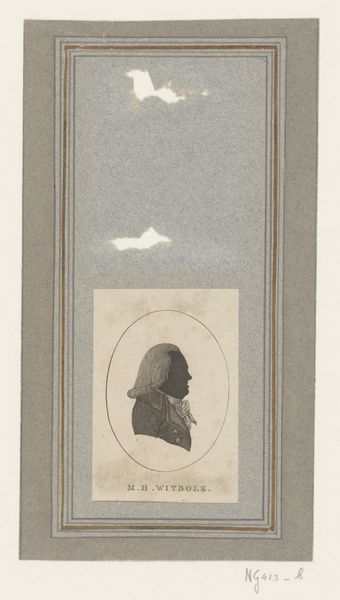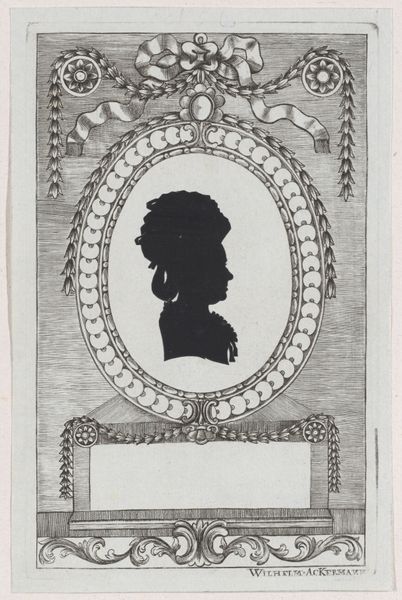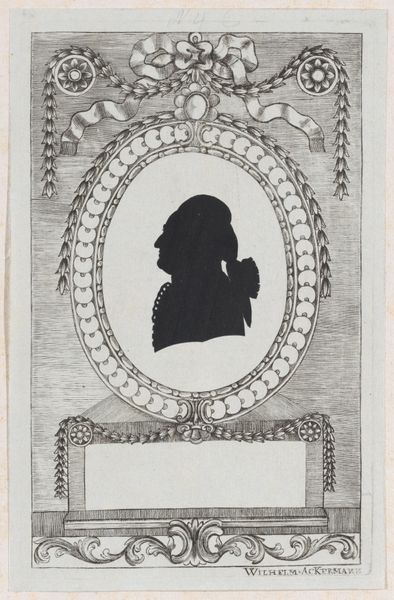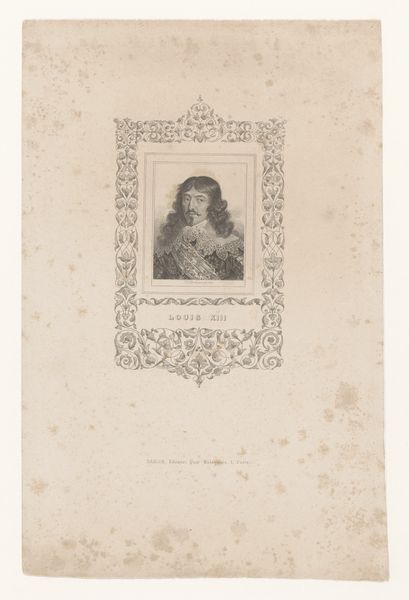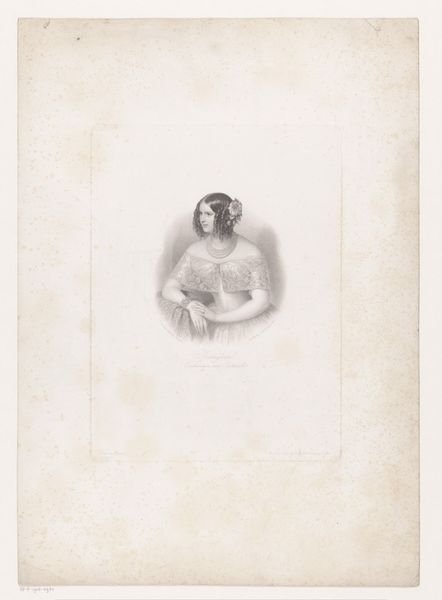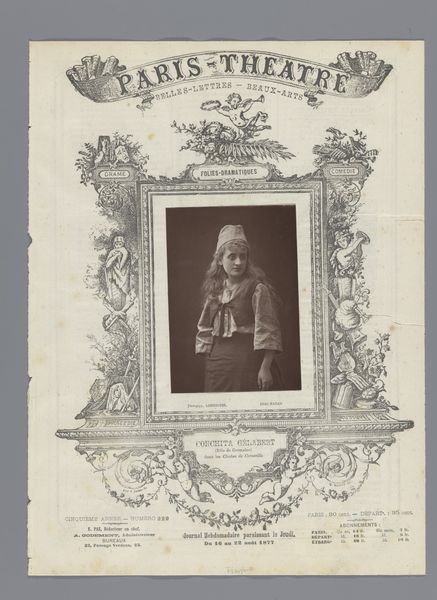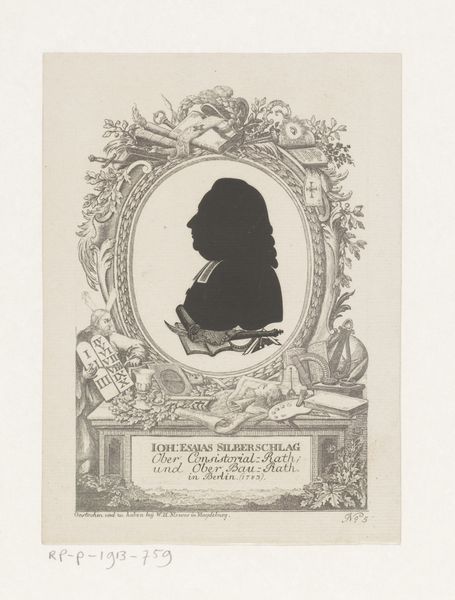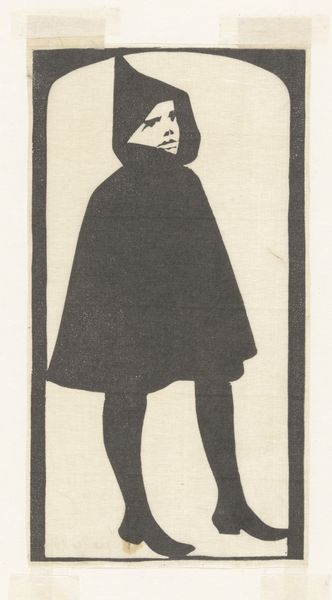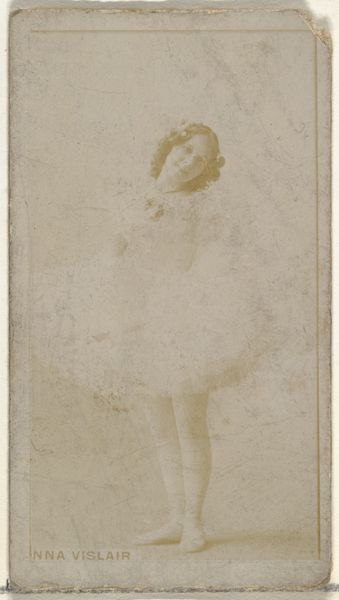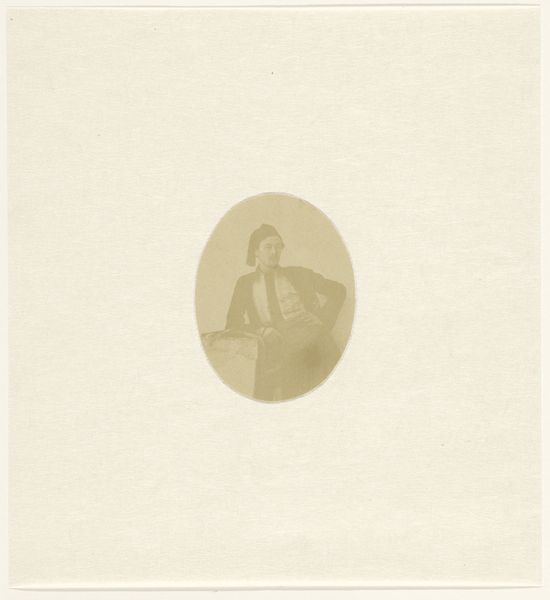
print, engraving
#
portrait
# print
#
line
#
engraving
Dimensions: height 181 mm, width 119 mm
Copyright: Rijks Museum: Open Domain
W.H. Mewes created this silhouette portrait of King Maximilian I Joseph of Bavaria. This print offers a glimpse into the visual culture that supported early 19th-century European royalty. Silhouettes were popular, offering affordable likenesses, and this one presents Maximilian I Joseph within a frame of regal motifs. His prominent silhouette, adorned with symbols of power and religious orders, projects an image carefully crafted for public consumption. Bavaria, at this time, was navigating complex political alliances, particularly with Napoleonic France. Such imagery reinforced the monarchy’s legitimacy amidst shifting European power dynamics. The inclusion of religious symbols also subtly intertwined divine right with secular authority. Royal portraits like these were not just personal mementos, but tools of statecraft. By examining the archives of the Bavarian court, alongside contemporary newspapers and political pamphlets, we can deepen our understanding of this image, revealing the ways in which art and politics were entwined. The meaning of this image is contingent on the social and institutional context in which it was made.
Comments
No comments
Be the first to comment and join the conversation on the ultimate creative platform.
